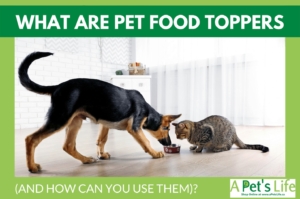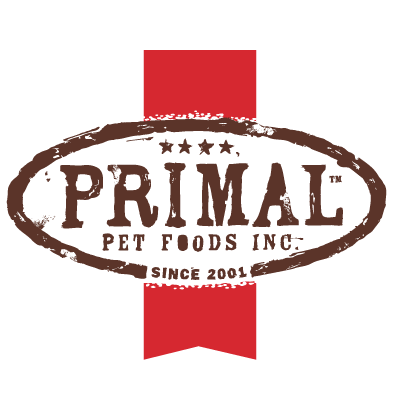Myth Busting Raw Food Diets for Dogs and Cats
in Cats, Dogs, PetsLife NewsJust like when we eat raw food, we need to ensure that we are feeding our pets the sort of clean, high-quality food that we would eat ourselves. When managed correctly, a raw food diet or partial diet can be exceptionally healthy for your pet and keep them living vibrant and active lives for years. And, just like us, you are what you eat so feeding your pets low-quality, over-processed food products day in and day out can lead to health issues and deficiencies. Here are a few myth-busting facts about raw food diets that you can take to the bank. Or, to our store, because we have tons of really great raw food to try!
We will say this, when considering a transition to a raw food diet or partial diet consider that your pet will go through an adjustment period. After living off kibble for their lives, their tummies are used to a certain type of food. Just like you and I, if we suddenly change to some exotic food we may have a … reaction. You know… The same thing can happen to your pet, so be prepared. While a little runny poop might be alarming, it’s just the pet adjusting to a new diet with a lot more moisture. It’s no biggie.
Myth 1: Raw food is smothered in salmonella and bacteria and your pet will die!
Okay, that might be a bit gratuitous, but we hear similar sentiments all the time; this is just fear-mongering. While ALL things carry bacteria from your fingers to apples, lettuce, toys, door handles, cell phones (you don’t want to know), get what we’re saying? It’s true that raw food that isn’t handled or stored correctly can lead to an increase in harmful bacteria, the handling of food should carry with it some basic common sense.
It’s a fact that both dogs and cats carry traces of salmonella in about 20-30% of all healthy pets. To limit any exposure to harmful bacteria, handle your pet’s raw meat/food as you would your own. Wash your hands before and after handling raw food. Serve the food shortly after thawing or immediately after prep. The rest should just come naturally.
Myth 2: Raw food diets for pets are unhealthy.
Again, this just isn’t true when applied with proper direction and common sense. It’s not healthy for humans to exist solely on fast food, right? I hope you said yes. Likewise for your pet. Dropping a handful of ground beef into your dog’s bowl isn’t going to be healthy over time, although doggo might wolf it down every time. Raw diets are a significant shift from over-engineered dry food that, depending on what you buy, is providing most of the required nutrients for a healthy diet. It just tastes like sawdust.
A raw food diet should be well researched and planned out with the help of your vet or a pet nutritionist possibly through your local pet store. Raw food diets can certainly deliver sub-optimal nutrition if it’s managed incorrectly, and who would do that to their pet?
Myth 3: Raw food diets are expensive and cumbersome.
As with all food, this can certainly be the case. A pre-made lasagne is many times the cost of the ingredients; the same goes for raw food diets. Companies that develop highly nutritious bricks of frozen, pre-made raw food dinners are providing an understandable convenience which is accounted for in the price. It takes a great deal of research, testing and regulatory hopscotch to produce a retail-approved product that meets all of your pet’s dietary needs. That adds up to a little more overhead but with the added assurance of the amazing, fresh and fully balanced diet, it’s well worth it in the end.
You will quickly fall into a rhythm of moving food from the freezer to the fridge and finally to the bowl so the food is only thawed for the least amount of time. You’ll get a kick out of watching your pets eating carrots and brocoly and other yummy vegetables.
Consultation and proper food handling will save the day.
All that aside, there is certainly the potential to do harm to yourself and your pet when choosing to feed a raw food diet that hasn’t been vetted by a pet nutritionist or your vet. This is why the pre-made options are very convenient but come with a higher price tag. There’s no guessing, it’s balanced, clean and processed according to approved food prep regulations.
Mishandling raw food can and will cause health issues and possibly, very serious health issues; as it would for humans. At the end of the day, transitioning to a raw food diet should be carried out in stages by slowly adding portions to your pet’s existing diet. Over a few weeks, your pet (your pet’s digestive tract) will adjust to the new meals and you’ll be off to the races.
Thinking of giving raw food a try? We have a whole host of assorted raw food options from very reputable companies. Here are just a few options to browse. Don’t hesitate to give us a call and chat about what might be a good fit for you and your fur-kids.
What are Pet Food Toppers?
in Cats, DogsWhat are pet food toppers (and how can you use them)?

Have you noticed lately that your dog or cat is no longer interested in their food? Just like humans, our pets can become bored or otherwise disinterested in what’s on the menu! Food toppers are a great way of adding a little pizazz to their food and an extra boost of nutrition.
Food toppers can be added to your dog or cat’s kibble to add an extra layer of nutrition and flavor. They come dried, wet, in gravies, or even freeze-dried. When looking for a food topper for your pet, keep the following 5 things in mind!
- Added Hydration
Wet food toppers are a great way of adding moisture to your pet’s food for added hydration. Male cats, for example, don’t often drink enough water and a wet food topper can benefit them.
Try: Open Farm Harvest Chicken Bone Broth
- More Protein
If you’re looking for a simple way to get more protein into your pet’s diet, a food topper made with natural and simple proteins can give the added boost you’re looking for.
Try: Primal Lamb Butcher’s Blend Topper
- Help finicky eaters
Sometimes our pets are just a little finicky and may need an added incentive to eat their regular kibble. Food toppers can add extra and new flavour to existing kibbles to help picky eaters!
Try: Primal Edible Elixir Winter Squash Puree
- Extra nutrition
To boost the nutrition value of your pet’s everyday food, adding additional nutrients and vitamins with a simple food topper can help increase your pet’s immunity.
Try: Primal Edible Elixir Healthy Green Smoothie Immunity Boost
- A tasty treat
While Food Toppers add nutrition to your pet’s diet, they can also be used as a treat! They are healthy and nutritious and pets find them delicious!
Try: ORIJEN Original Freeze-Dried Dog Food
If you’re looking to try a food topper for your furry friends, check out our wide variety of food toppers for both dogs and cats — you can order online or pick up in-store!
5 Easy Ways to Entertain Pets When Working from Home
in Cats, Dogs, PetsLife News
Keeping our pets entertained while working from home can be challenging, especially when you’re working long days or are always on a Zoom call! Despite how busy we might be, our pets need mental stimulation to help keep their minds sharp and to nurture their instincts, especially as they grow older. Let’s take a look at 5 simple yet effective (and fun!) ways you can keep your pet entertained while you work from home.
Give your dog something to chew
Dogs love to chew, so let’s give them something to gnaw on (besides the couch!). Provided the chew toy is the appropriate size for your dog, this will keep your dog busy and entertained while avoiding any destructive behavior. Try one of our quiet Hush toys or Benebone’s to keep your pup busy when you are!
Try interactive toys for your cat
Cats are tiny little hunters, and they love trying to hunt down and catch things! To stimulate their
senses and their hunting instincts, you can use interactive toys like puzzle toys, lasers, and
interactive tunnels to keep them busy (and their instincts busy, too).
Give them treat puzzles
Treat puzzles are a simple yet effective way to entertain pets as they hunt for treats and will keep
them busy for hours. They’re also a great way to train your dog’s or cat’s minds!
Get longer walks in earlier
If your dog appears to be bored while you’re working from home or has lots of energy in the
morning, consider taking them for a long walk or jog in the early morning. This will help them burn
off excess energy and give them a daily dose of exercise.
Make pet popsicles!
Not only are pet popsicles a great way to make healthy, nutrient-rich treats for your pets at home,
but dogs and cats alike will be kept busy licking and eating their popsicles while you’re on work calls
or getting projects done! Pet-healthy ingredients like bone broth, goat’s milk and
other nutrient-rich foods right from your fridge can make popsicles delicious and good for your pet!
With these 5 simple yet effective ways you can keep your pet entertained all day!
If you’re looking for new and healthy toys, treats, and accessories for your furry friend, stop by our
store or shop our variety of products online. We have an array of goodies for your pet that will keep
them entertained and stimulate their senses!
Why Cats Make the Best Pets
in CatsNo… it’s not our intention to stir up controversy so early in the new year in…



